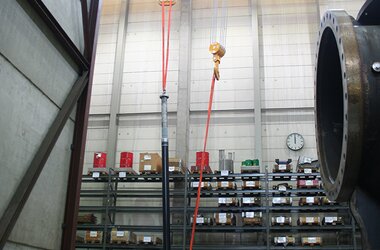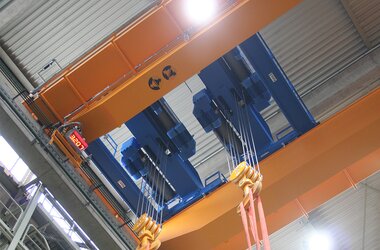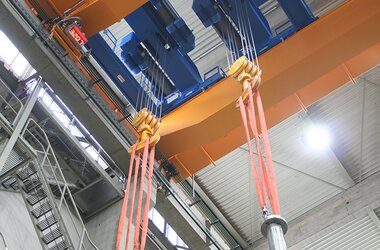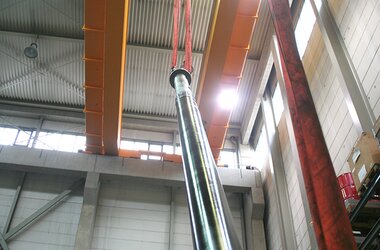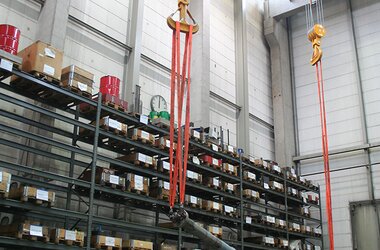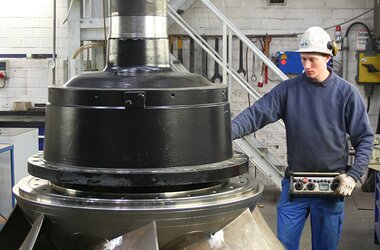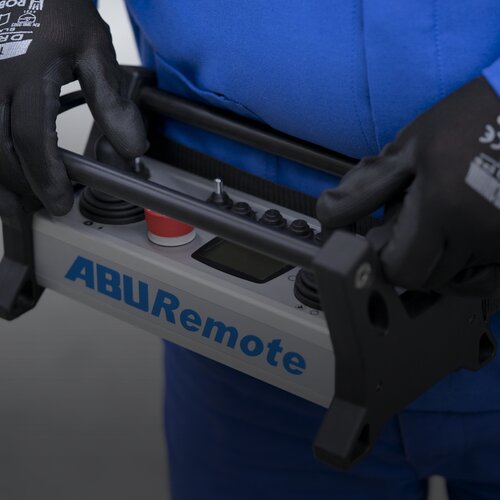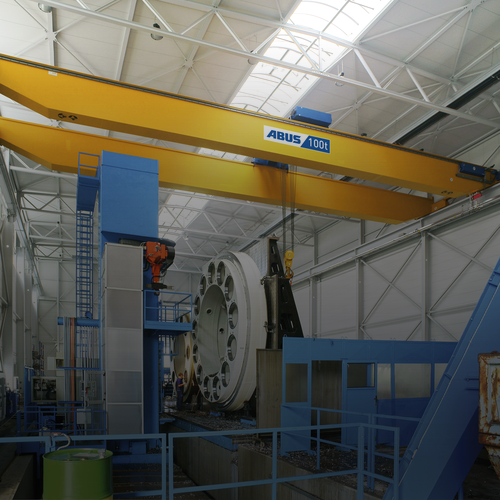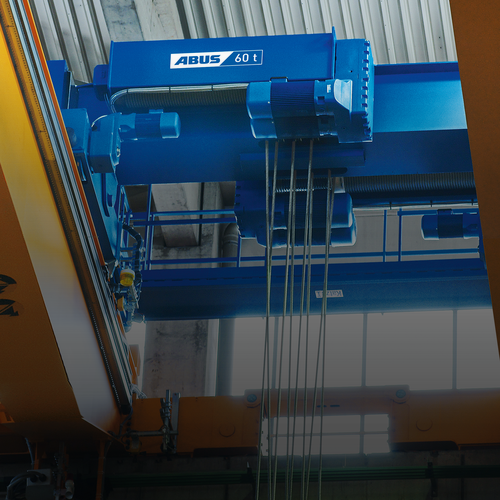ABUS double girder crane ZLK with two hoists at pump manufacturer KSB
The principle of the so-called spiral pump or Archimedean screw pump—used to pump water from one level to another either for watering or for drainage—is still to be found in many applications today. This screw pump goes back to a development attributed to the Greek mathematician, inventor, and engineer Archimedes who lived in the third century BC. In the world of industrial applications substances have to pass through pumps that have the most diverse characteristics: liquids with high or low viscosity, some aggressive, some even including solids. In the branch of industrial pumping and armature technology the KSB group with headquarters at Frankenthal in Germany is among the world leaders when it comes to manufacturing pumps and valves and to providing related services and maintenance. The tradition-steeped company was founded in 1871 by Mr Johannes Klein after he had received a patent for his invention of a boiler feed apparatus. Already in 1896 the first KSB export company was established in the UK. Today more than 16,000 employees in over 100 countries ensure that KSB pumps and valves are used wherever liquids require transportation or blocking off. This might be the case in the energy industry, the water and waste water industries, or even in the mining industries.
The pumps, suitably adapted to whatever fluid they are going to transport, vary greatly in size, weight, and dimensions. One of the pump series produced at the headquarters of the company is characterised in particular by high flow volume at low pressure. This type of pump is used in desalination plants or in drinking water treatment plants and can pump up to 100.000 cubic metres per hour. Pumps can be up to 20 metres high. The individual components are transported horizontally into the assembly hall where the pumps are then assembled in a vertical position. ABUS supplied a double girder EOT crane ZLK with two electric wire rope hoists with 60 tonnes of SWL each in order to help with this demanding handling task. The crane not only lifts and lowers the loads but makes it possible to turn the load over. Both lifting units consist of double rail trolleys with twin hoists. While the pump is assembled the hoists lift components weighing between 2.5 and 45 tonnes each. Each step during assembly requires precision lifting and lowering to fit the individual elements of the pumps yet also calls for fast transport of partial loads in order to save considerable time. The four different speeds specified by KSB are realised by using the frequency converter ABUliner: in “microspeed lifting” infinitely variable speeds between 0.2 and 1 meter per minute are achieved whereas the opposite end of high speed lifting allows speeds of up to 12.6 metres per minute depending on the loads. Once the pumps are assembled they are transported to the test stand within the assembly hall.
In particular the turning of suspended loads is a task that requires great care and caution. The two lifting units of this crane can be operated independently of each other in order to turn the load. To control these lifting units KSB uses the ABUS remote control ABURemote with three master switches. The left joystick controls crane travelling and each of the lifting units has its own lever for travelling as well as lifting and lowering. Thus the crane user can control the hoists at different speeds and in different directions in order to start turning the load. Then he can let the trolleys approach each other until the long elements of the pumps are finally suspended entirely by one hook only. Additional safety is provided by a large load display displaying the suspended load and good lighting of the working area provided by four halogen lights mounted on the crane.
Nearly each of the individual assembly steps of the 40 pumps that are manufactured here per year requires some lifting. The working conditions of the 20 employees employed in the assembly hall have greatly improved since the new ABUS crane was installed and efficiency has increased.

